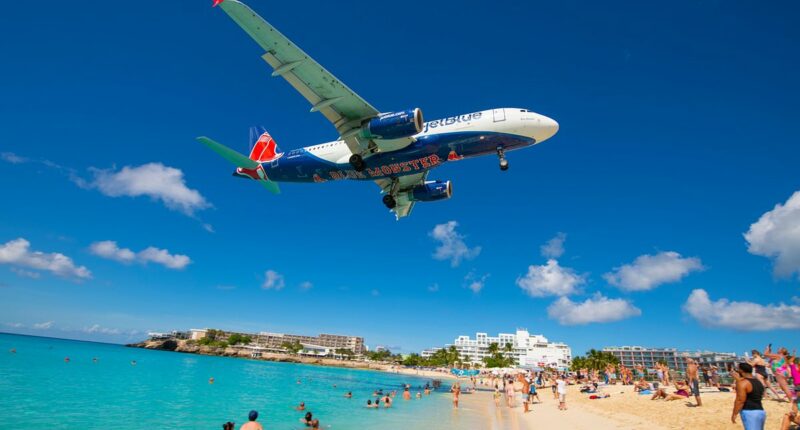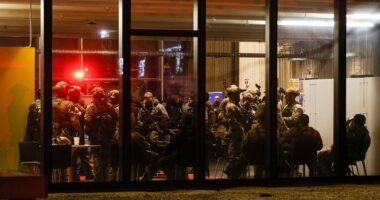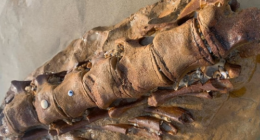Share this @internewscast.com
In the heart of the Caribbean lies a beach that, despite its serene appearance, hosts one of the most thrilling and daunting airport landing strips in the world. This fascinating juxtaposition seems to draw visitors from every corner of the globe.
Maho Beach, nestled on the picturesque island of Saint Martin, is a paradise for aviation enthusiasts and adrenaline junkies. However, those seeking a tranquil seaside escape might find it a bit too exhilarating.
A mere strip of road divides the beach from the runway at Princess Juliana International Airport. During peak travel seasons, this proximity means up to 70 aircraft soar dramatically overhead, offering a spectacle for beachgoers below.
The airport’s runway, nestled alarmingly close to the azure waters, provides one of the most breathtaking airplane viewing experiences available. Despite its brevity, the runway accommodates an array of large aircraft, including Air France’s Airbus A340-300 and various Boeing 737 models.
This unique plane-spotting opportunity has become an integral part of the local charm. Beachfront eateries and bars have embraced this, frequently updating flight schedules so tourists can plan their visits to coincide with the breathtaking displays.
Plane watching has become so much a part of the local culture that beachfront restaurants and bars post updated flight schedules to help tourists time their visits.
The beach once featured on the History Channel’s ‘Most Extreme Airports,’ which ranked Princess Juliana as the fourth most dangerous airport in the world.
A viral video recently shared to X captures the take-off of one plane, which begins with sand swirling in the air as the jet accelerates and gradually ascends from the runway.

Maho Beach, situated on the island of Saint Martin, has become a popular destination for aviation fans and thrill-seekers due to its proximity to the airport runway

A single road separates the beach from the runway at Princess Juliana International Airport, which sees up to 70 planes fly over beachgoers’ heads each day during the summer
Several beachgoers can be seen shielding their eyes as the wind picks up and blows perfectly laid towels into the sea, while others are knocked off their feet entirely.
By the time the plane lifts off, most visitors have been forced to retreat – with a few even ending up in the water.
Speaking to CNN, airport worker Franklin Wilson, said: ‘It’s scary. It feels like it’s coming straight at you.’
For pilots, though, the experience provides a view like no other, with Wilson’s colleague Irving Maduro adding: ‘They love seeing the people on the beach below them.’
Despite the odd chance of getting sand blown in ones eye, or having a deep reading session interrupted, the beach, located on the Dutch side of the island, draws plenty of tourists thanks to its lively coral reef, turquoise sea and powdery white sand.
Visitors are regularly told to follow warning signs that caution against standing too close to the fence or holding onto it.
Local authorities previously warned the jet blast from the beach is not safe, with instances in the past bordering on dangerous for particular tourists, such as in January when tourists were blown into the sea while attempting to capture footage.
Another runway that was once considered the most terrifying place to land a plane was Kai Tak, Hong Kong’s former airport until its closure in 1998.

The beach once made an appearance on the History Channel’s ‘Most Extreme Airports,’ with Princess Juliana ranked the world’s fourth most dangerous airport

Plane watching has become so popular on the beach that establishments, including restaurants and bars, now display up-to-date flight timetables to draw more customers
It was famous for its challenging runway surrounded by skyscrapers, mountains, and Victoria Harbour – forcing pilots to execute a sharp, low-altitude turn to land.
This technically demanding approach, which had to be flown manually, was regarded as one of the most difficult in aviation history – so much so that pilots had to undergo specific training to ensure they could land without any errors.
Planes would be required to descend to a low altitude before making a right-hand turn at about 47 degrees around a large red-and-white checkerboard on a hill.
The aircraft would complete the final leg by lining up with a runway that jutted into Victoria Harbour.








